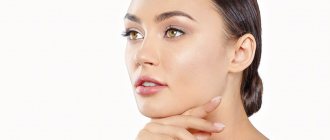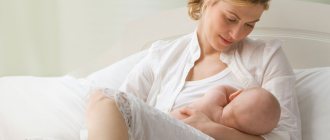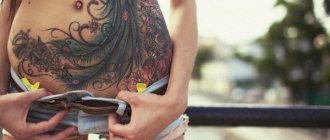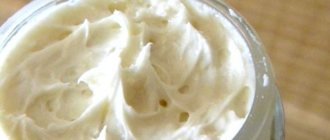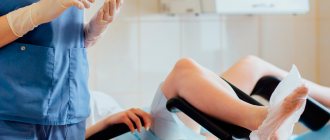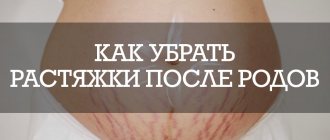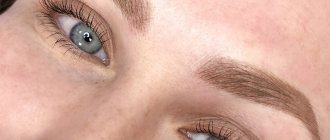Why does hormonal imbalance occur after childbirth?
Childbirth itself is already a cause of hormonal imbalance. But recovery may take longer for the following reasons:
- difficult childbirth;
- lack of milk;
- illnesses suffered in the first months after childbirth;
- stress;
- drug use;
- unbalanced diet;
- smoking, alcohol consumption.
A woman wants to quickly return to her old life, so she often harms her body by not giving it time to recover. Thus, mothers who immediately after childbirth go to work, start smoking or go on a strict diet, dreaming of saying goodbye to the extra pounds gained during pregnancy, are at risk.
Another situation is also possible. The woman devotes all her strength to the child, eats and sleeps poorly, practically does not rest, is nervous, neglects self-care (which can also cause acne).
Diagnostic methods
At the first signs of rashes, experts advise directly contacting allergists, the category of doctors who are the fastest to recognize the type of manifestation. Allergy tests help to quickly establish the causes and factors that triggered the rash. To do this, you need to donate blood for analysis. This is a reliable but slow diagnostic procedure, sometimes it is important to start treatment sooner
Acne is often caused by infectious diseases, so it is advisable to conduct a provocative skin test. A method that almost immediately reveals the presence of rash pathogens.
Signs of hormonal imbalance
3-4 months after birth, hormonal levels gradually return to normal. During this period, it is necessary to analyze your physical well-being, emotional and mental state.
Symptoms of hormonal imbalance include the following:
- sudden mood changes;
- nervousness, a state when tears well up in the eyes by themselves;
- sudden outbursts of aggression;
- hair loss;
- feelings of guilt, painful thoughts (about the inability to be a good mother and wife, etc.);
- a sharp jump in weight (lack or excess);
- pathological suspiciousness;
- depressed mood;
- problems with breastfeeding, including lack of milk;
- reluctance to breastfeed;
- painful menstruation;
- acne;
- hyperpigmentation;
- decreased libido.
If these symptoms occur, you should consult your doctor.
Hormonal changes that occur after childbirth lead to the development of a number of atypical conditions for the body, one of which is urticaria.
What is hives after childbirth?
Allergens and hormonal changes contribute to the release of a protein called histamine into the blood. As a result, the immune system reacts in the form of redness of the skin and an itching sensation on various parts of the body.
Is hives after childbirth normal?
Urticaria occurs in almost every fifth woman who has given birth. This skin condition occurs at different times and usually appears on the arms, back, and legs.
What are the causes of hives after childbirth?
Here are some reasons that can lead to a woman developing hives after childbirth:
- insect bites;
- hormonal changes after childbirth;
- stress;
- health problems (for example, acute thyroid disease);
- exposure to intense sunlight, heat or very cold climates;
- environmental conditions both outside and inside the house;
- some medications;
- certain foods or food additives.
What are the symptoms of hives after pregnancy?
Here are some hives symptoms to look out for:
- scaly skin;
- itching sensation;
- painful swelling;
- blanching, where areas of the skin become very pale or white;
- raised scars on the skin.
In some cases, hives after childbirth can lead to life-threatening complications such as anaphylactic shock, in which a person cannot breathe.
How to treat hives after childbirth?
There is no definitive treatment for postpartum hives, but you can try the following:
- Drink plenty of fluids
Drink plenty of water and increase your fluid intake.
- Use cream
The burning sensation can be relieved with cream or lotion. Consult your doctor about the most effective remedies.
- Manage your stress
Since stress is a factor that plays a role in the occurrence of hives, you should try to meditate and rest as much as possible.
- Don't refuse help
If you can get help, it will allow you more time to rest and, in turn, take better care of your baby and yourself.
4 home remedies to help get rid of hives after childbirth
Here are natural and safe remedies you can try at home to combat hives after childbirth.
1. Oatmeal
Oatmeal's anti-inflammatory properties help soothe the skin and relieve itching and swelling.
Take a microfiber cloth and place one cup of oatmeal in it. Soak in a bowl of hot water for about 15 minutes and then add to your bath. Take a bath for 15 minutes once a day.
Make sure the water temperature is not too high, as it may irritate the skin further.
2. Cold compress
An increase in histamine can be prevented by contracting blood vessels. A cold compress will provide relief from inflammation, itching and swelling.
Use a towel or microfiber cloth to wrap a few ice cubes and place on the affected area. Apply to skin 3-4 times a day. It is also recommended to take a cold bath or shower.
3. Aloe vera gel
Aloe vera is incredibly effective in healing and improving skin condition.
Fresh aloe vera gel should be applied to the affected areas of the skin and left for about 20 minutes before rinsing with cold water. This can be done several times a day.
4. Apple cider vinegar
Apple bite has antihistamine properties and relieves inflammation.
Mix apple cider vinegar and water in equal quantities and wipe the affected area of skin with a cotton pad. Do this twice a day.
How long does hives last after childbirth?
This condition usually goes away in about 6-8 weeks. With proper care, urticaria may disappear in less time.
Urticaria after childbirth and breastfeeding
The only thing that worries most mothers who suffer from hives is the impact it can have on breastfeeding and the risks that the baby may face after drinking milk.
Antihistamines containing loratadine and fexofenadine are considered safe, and studies have shown that exposure to these medications in infants is minimal.
In any case, you should consult your doctor before taking any medicine.
Acne* after childbirth: how to get rid of it?
If acne appears after childbirth, you should consult a doctor. He will prescribe the most gentle treatment, including one aimed at normalizing hormonal levels. Under no circumstances should you self-medicate during pregnancy or breastfeeding.
At the end of the lactation period, a dermatologist may prescribe topical medications, such as azelaic acid, to treat acne5,9. Azelik® is an azelaic acid gel5. It reduces the concentration of free fatty acids on the skin, normalizes the keratolytic processes occurring in the follicles5.
The drug exhibits antimicrobial activity against Propionibacterium acnes and Staphylococcus epidermidis5. The anti-inflammatory effect of Azelik® gel can be explained by the ability to reduce the metabolism of neutrophils and reduce their production of free radical forms of oxygen5.
*acne
Treatment of urticaria during breastfeeding
If the cause of the disease and the type of rash itself have been established, you should immediately begin treatment for urticaria. The factor causing the rejection reaction must be immediately eliminated. It could be:
- cosmetics and perfumes;
- cleaning and detergents;
- fruits or juices;
- medicines;
- synthetic items or clothing made from non-natural material;
- contact with pets.
If you have an allergic reaction to representatives of the plant world during their flowering period, you should avoid walking in places where they accumulate.
Measures
To treat urticaria use:
- lotions;
- baths;
- rubbing;
- masks;
- medicines;
- folk remedies.
All medicinal substances and procedures are performed under the supervision of a specialist, with caution. If the rash worsens, the medicinal substance is excluded from the list of medications used.
Procedures
Some procedures (to strengthen the immune system) enhance the body's resistance, and in case of chronic diseases, increase the period of remission. Others reduce negative symptoms: relieve itching, swelling, pain.
In physiotherapy for postpartum skin lesions, they are used
- weak currents (darsonvalization);
- ultraviolet treatment;
- radon and sulfide baths;
- UHF irradiation;
- electrophoresis with medicinal solutions.
Medicines
Urticaria is not a dangerous disease, but the accompanying symptoms can cause significant harm. Especially for a woman weakened by childbirth. Therefore, you need to be fully armed, know and be able to use first aid medications:
- Adrenaline (vasodilator), injected intramuscularly, once, if the effect is weak, repeat after 10-15 minutes.
- Prednisolone (a steroid drug) is given intravenously as a substance to suppress an acute allergic reaction (every 4 hours).
- Diphenhydramine (antihistamine), a second-line drug, is administered intramuscularly with a break of 4-6 hours.
In case of long-term treatment use:
- Injections. Fenkarop is used to relieve swelling and reduce allergies. Suprastin enhances resistance and slows down the mechanics of the development of an allergic reaction.
- Pills. Trexil, Zyrtec, Tavegil, Claritin.
- Antibiotics. Penicillin, Biseptol.
- Vitamins. Magnesium, Beta-carotene, PP, B12, C.
- Sorbents. Polysorb, activated carbon.
- Selective immunosuppressants. Xolair.
- Ointments. Akriderm, Advantan, topical ointments. Gistan-N, Flucinar, Lorinden-S are hormonal drugs. Zinc ointment, La-Cri, Fenistil, Bepanten, salicylic-zinc ointment, Nezulin are non-hormonal drugs.
Diet
The diet prescribed for urticaria is mandatory for all categories of patients.
Food products that should be excluded from the menu partially or completely:
- Foods with a high salt content: salted nuts, crackers, pickled fish, canned food.
- Temporary ban on home supplies in the form of canned fruits and vegetables.
- Food products with preservatives, food colors, emulsifiers, raising agents.
- Vegetables and fruits of yellow, orange, red colors.
- Reduce traditional allergens: eggs, milk, honey, seafood.
- Ban on exotic foods: shellfish, fruits, meat.
For the treatment of allergic diseases, it is advisable to use an elimination type of nutrition, used for patients who, due to circumstances, cannot pass the necessary tests. This type of diet advocates gentle nutrition and strict avoidance of unwanted foods.
Regardless of the type of nutrition you choose, you will benefit from:
- method of preparing products (all products undergo heat treatment);
- method of separating products (separately protein, carbohydrate, fatty);
- meals strictly according to schedule.
When eating on a diet, some of the foods in one category may be prohibited, for example:
- Of the fermented milk products, only low-fat or low-fat ones are allowed: cheese, yogurt, kefir;
- Cereals are allowed from cereals: oats, corn, millet;
- Green varieties of pears, apples, and white currants are allowed as fruits;
- vegetables are allowed baked: potatoes, zucchini, broccoli, carrots;
- lean, dietary varieties of meat and fish.
During the diet, you should drink as much water as possible, temporarily excluding strong tea, coffee, and fruit juices. It is advisable to exclude baked goods, creams, dishes with a high content of sugar, oil, and animal fat.
